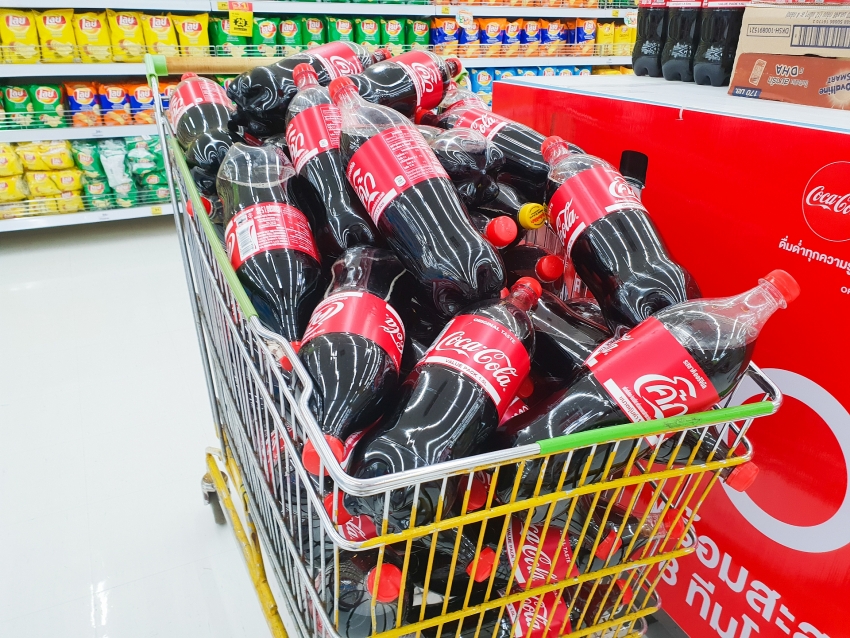No surprise: Coca-cola is the world’s largest plastic waste producer
 |
Greenpeace has just announced the ten multinational companies flooding the planet with the most throwaway plastic. They are Coca-Cola (first), PepsiCo (second), Nestlé (third), Danone (fourth), Mondelez International (fifth), Procter & Gamble (sixth), Unilever (seventh), Mars Incorporated (ninth), and Colgate-Palmolive (tenth).
The most commonly-found type of plastic waste was polystyrene, followed by PET.
In America, the top polluters are Coca-Cola, PepsiCo, and Nestlé. They account for 64 per cent of branded plastic pollution in North America and 70 per cent in South America. Europe’s top polluters are also these three giants, making up 45 per cent of all plastic pollution found.
According to nationalgeographic.com, Kara Lavender Law, a research oceanography professor, said that the results are not surprising. Coca-Cola is the world’s largest producer of bottled drinks and manufactures 128 billion bottles of soft drinks and Dasani bottled water a year, according to figures supplied by the corporation. Nestlé, which operates in 189 countries, is the world’s largest food and beverage producer. PepsiCo, with six global divisions, also has a worldwide reach.
Identifying global brands does not necessarily advance science, Law said. “Unless you are looking at a geographically-limited company that you can trace, I think it is more a matter of trying to engage the people producing the products.”
Jane Patton, who authored the Greenpeace audit report, said that this is exactly the point.
“What we are doing is moving the conversation upstream and allocating responsibility not to the first consumer, but to whoever made that bottle in the first place and who is responsible for that bottle once it is consumed,” she said. “We are calling for corporations to immediately stop over-packaging their products, to redesign their products so waste can be eliminated, and to take responsibility for the waste once it ends up in the environment.”
All three companies have pledged to reduce plastic waste by redesigning products to make them more recyclable, reducing unnecessary plastic packaging, and increasing the amount of recycled materials used to manufacture their products. Each company has set targets for these goals to be achieved between 2020 and 2030.
Greenpeace, in partnership with a consortium of environmental groups known as Break Free From Plastic, has begun cataloguing items gathered in clean-ups by brand name. The approach was tested on a beach in Manila Bay in 2017 and expanded this year to include 236 beach clean-ups in 42 countries that yielded more than 187,000 pieces of plastic trash. The most recent clean-ups were conducted primarily on ocean beaches, but also included riverbanks, city parks, and streets.
What the stars mean:
★ Poor ★ ★ Promising ★★★ Good ★★★★ Very good ★★★★★ Exceptional
Related Contents
Latest News
More News
- PM orders investment model for North–South high-speed rail (December 22, 2025 | 17:43)
- First members of Danang International Finance Centre revealed (December 22, 2025 | 17:39)
- Securing capital and efficiency for Vietnam’s 2026-2030 growth ambitions (December 17, 2025 | 10:00)
- Driving double-digit growth through green and circular transformation in Vietnam (December 17, 2025 | 09:00)
- Vietnam bucking trend in the global M&A landscape (December 16, 2025 | 14:20)
- Vietnam’s green transition demands collective financial action (December 15, 2025 | 12:00)
- VIR workshop highlights capital and policy for sustainable development (December 15, 2025 | 11:00)
- National Assembly approves pilot mechanisms to accelerate major projects in Hanoi (December 12, 2025 | 11:29)
- Vietnam eases policy approval requirements, simplifies foreign and outbound investments (December 11, 2025 | 17:53)
- Unpacking new momentum in Vietnam’s M&A market (December 10, 2025 | 09:59)

 Tag:
Tag:



























 Mobile Version
Mobile Version